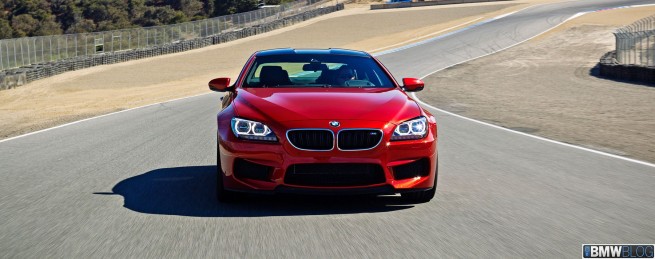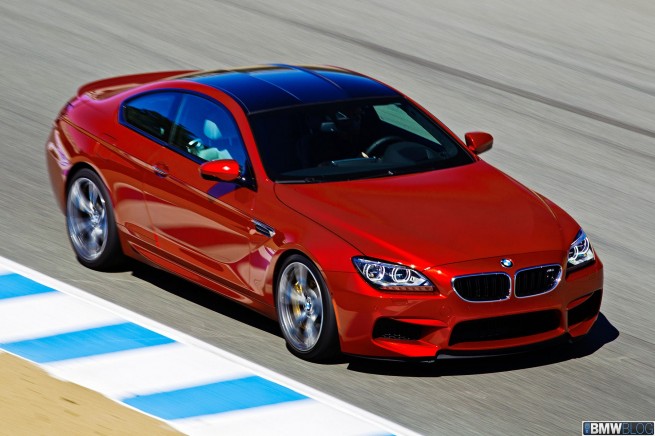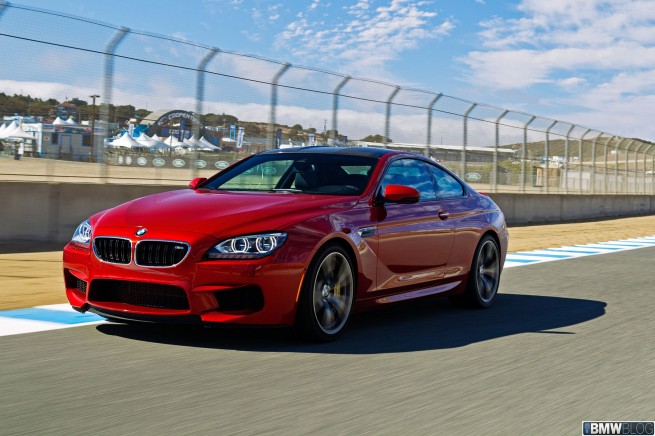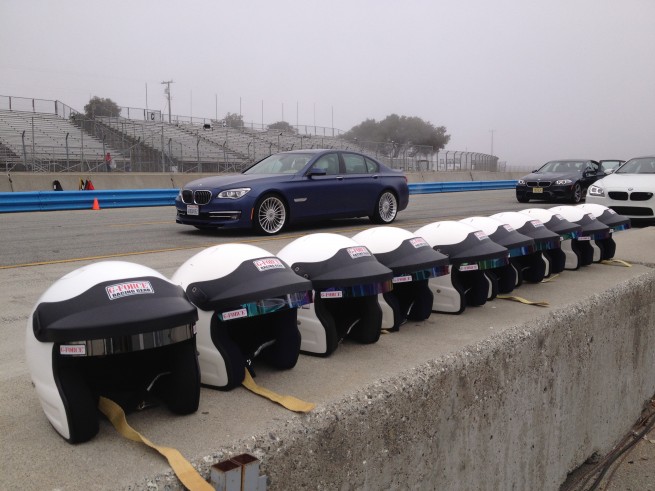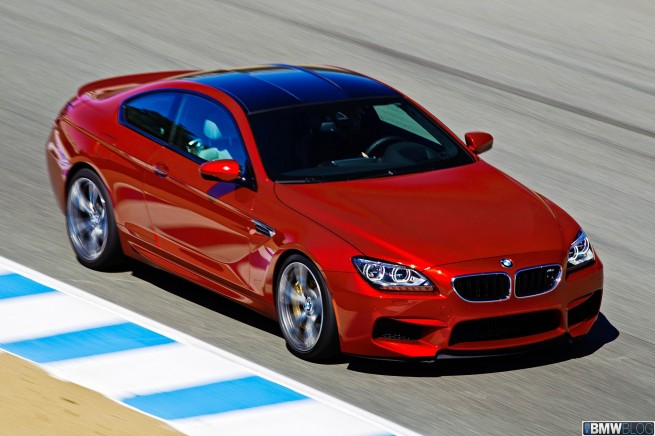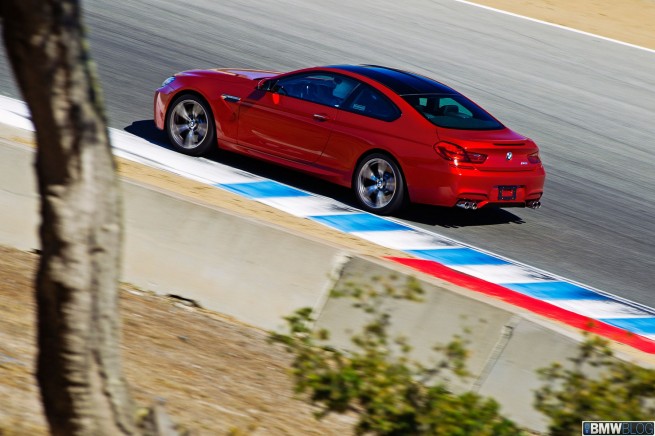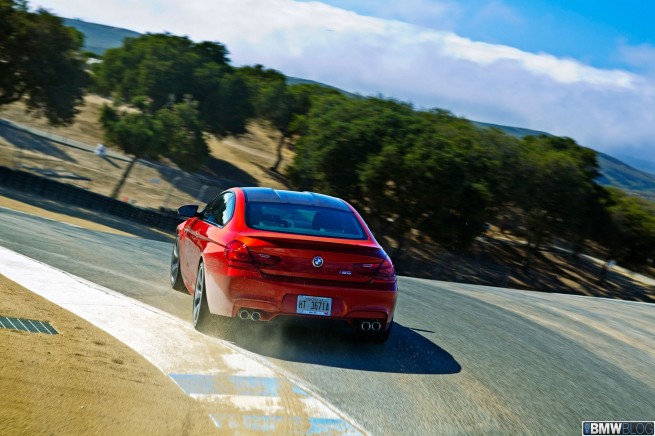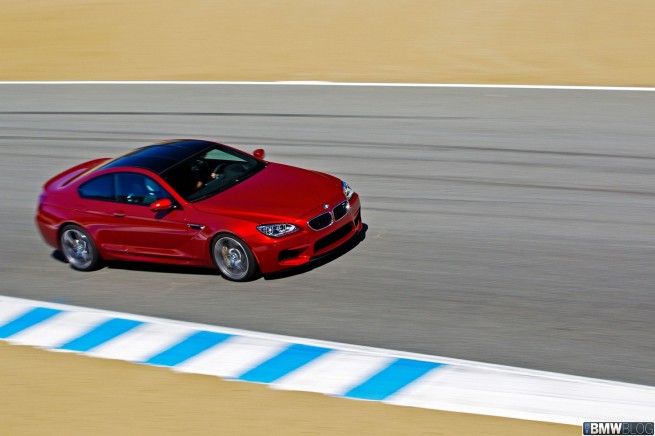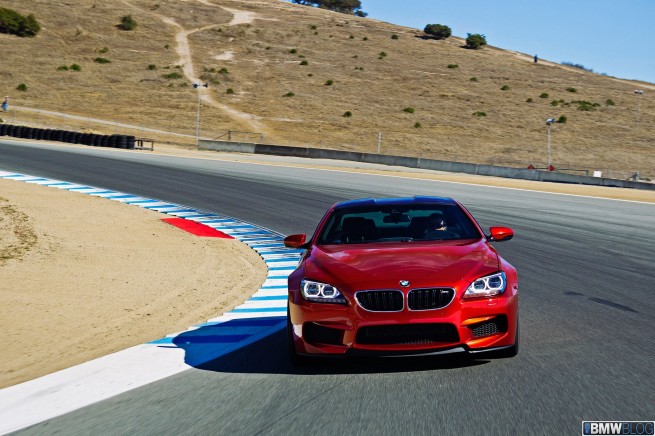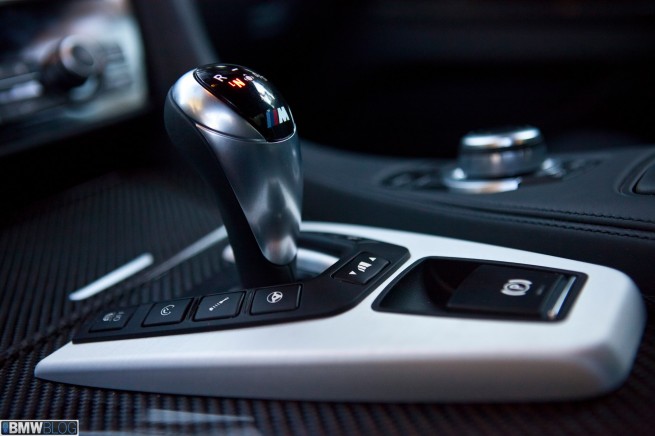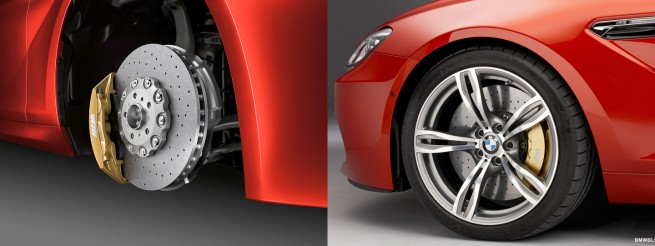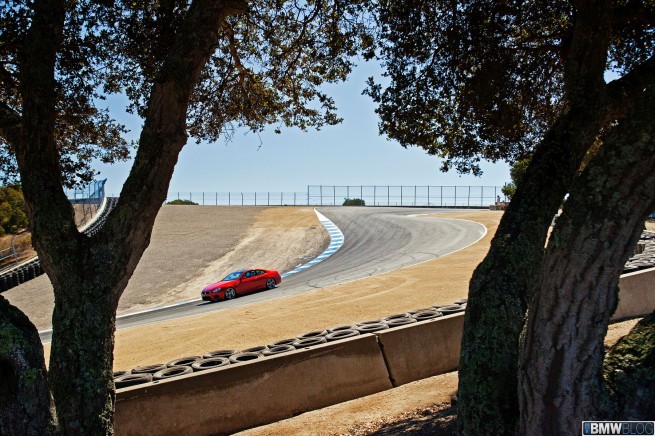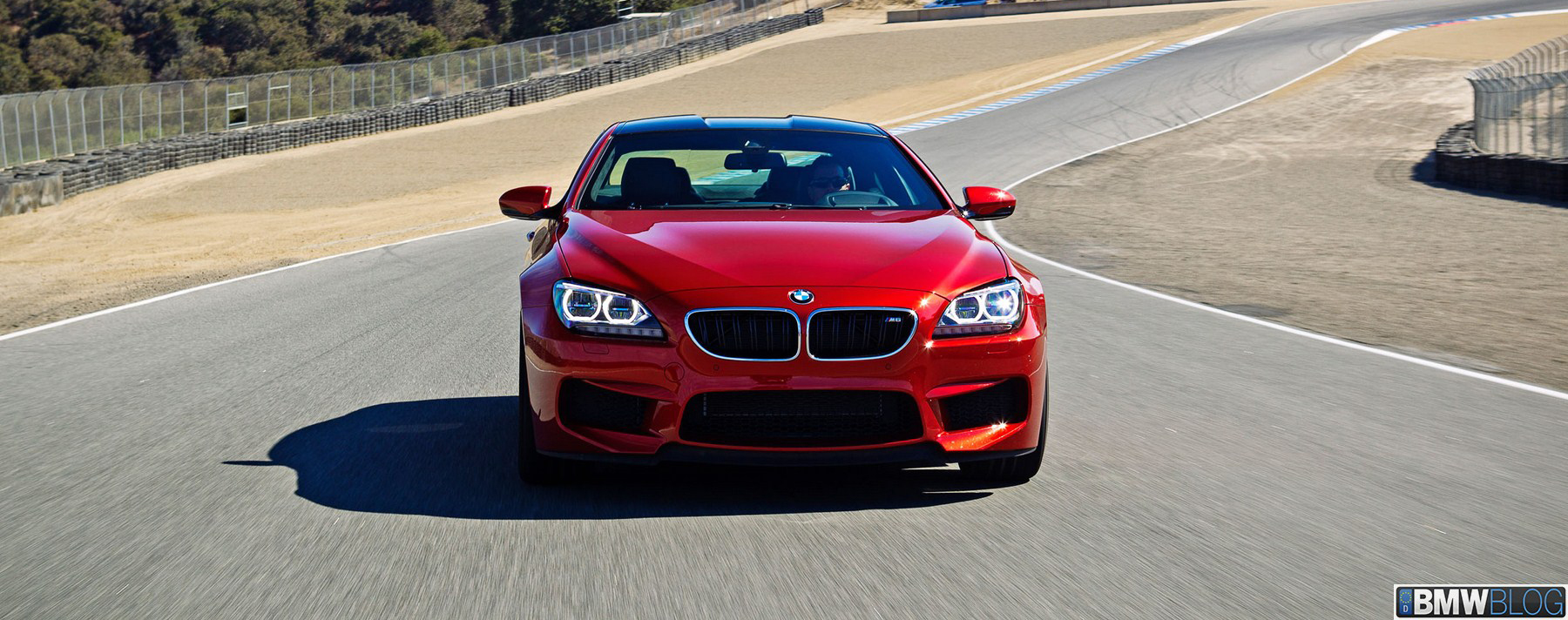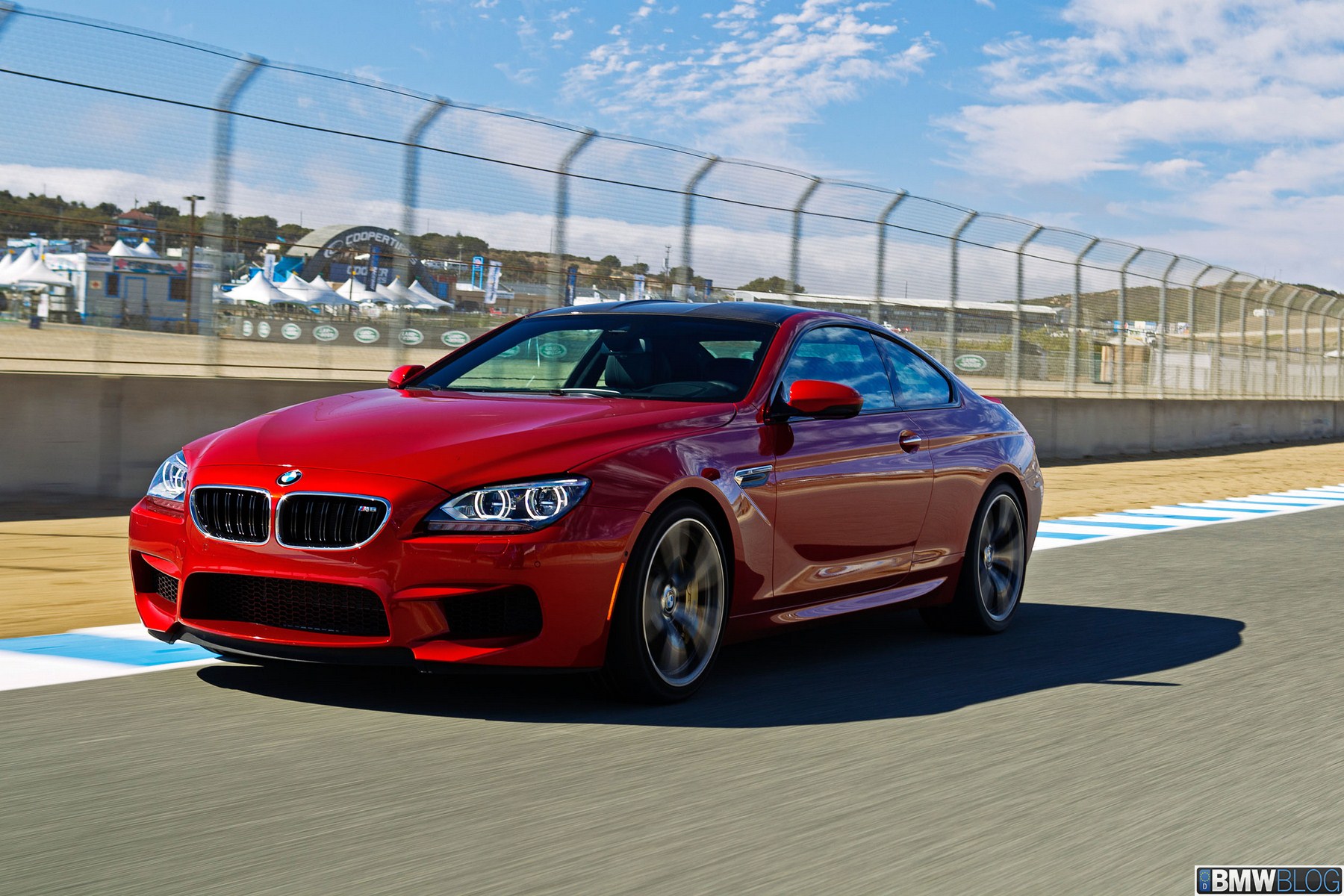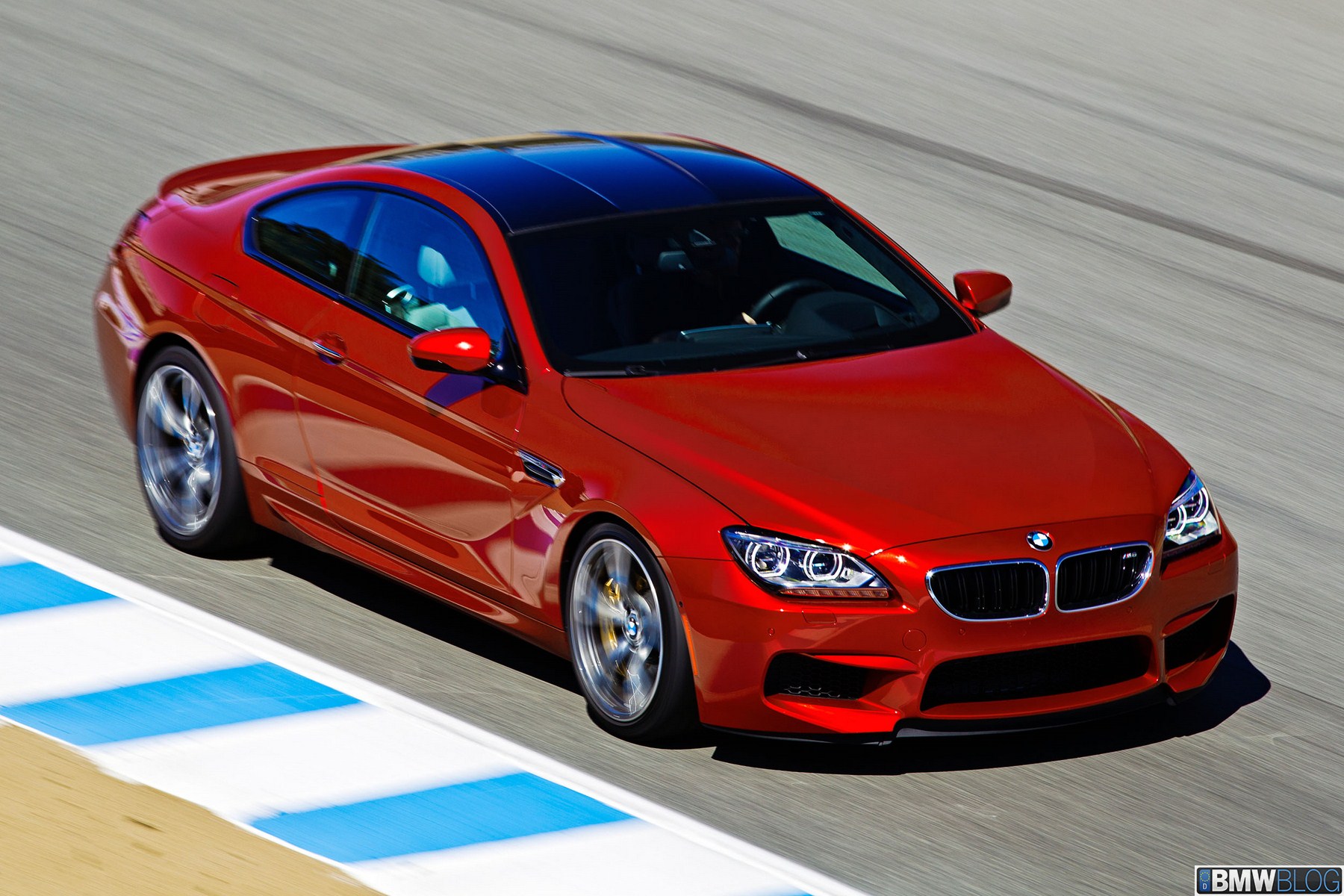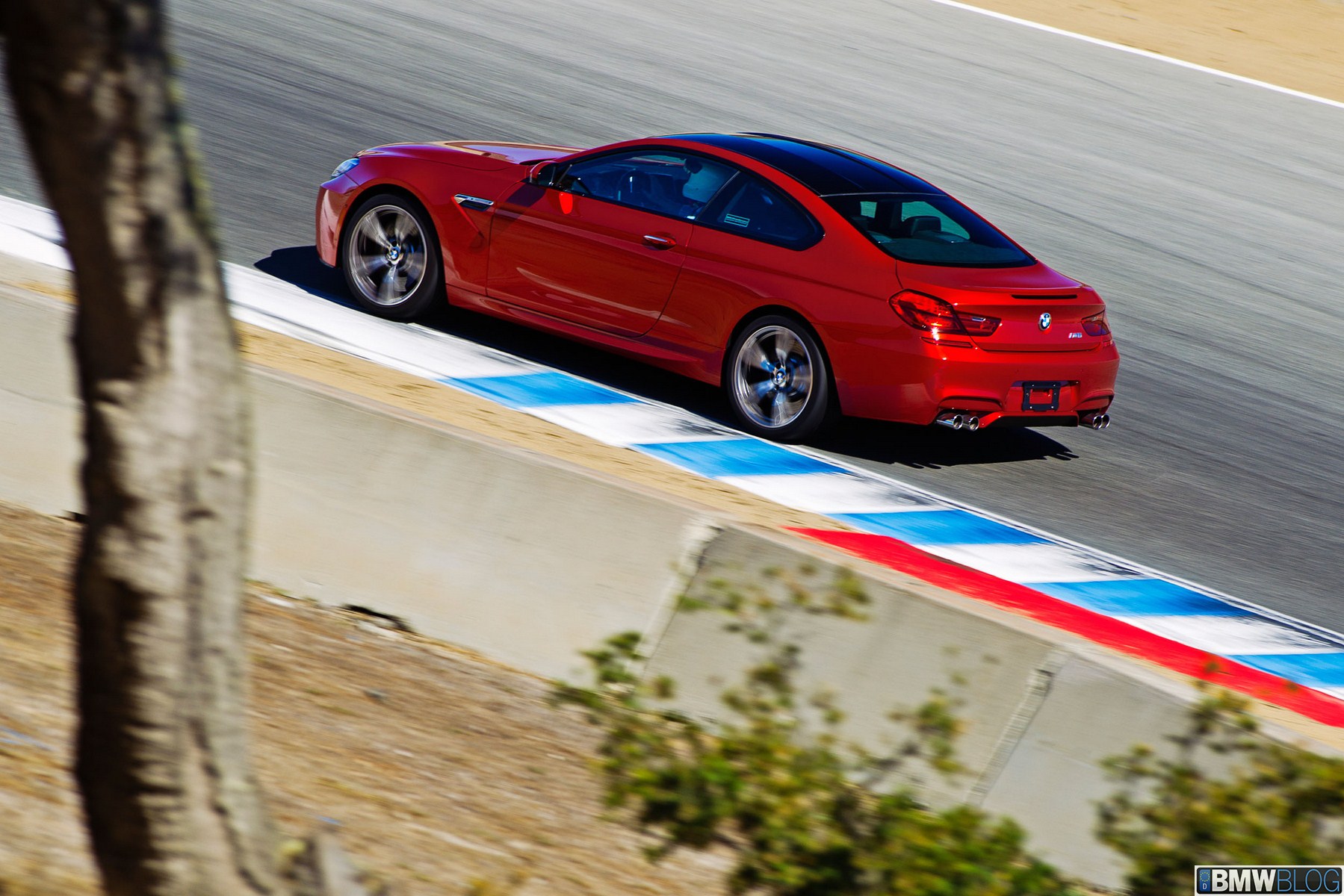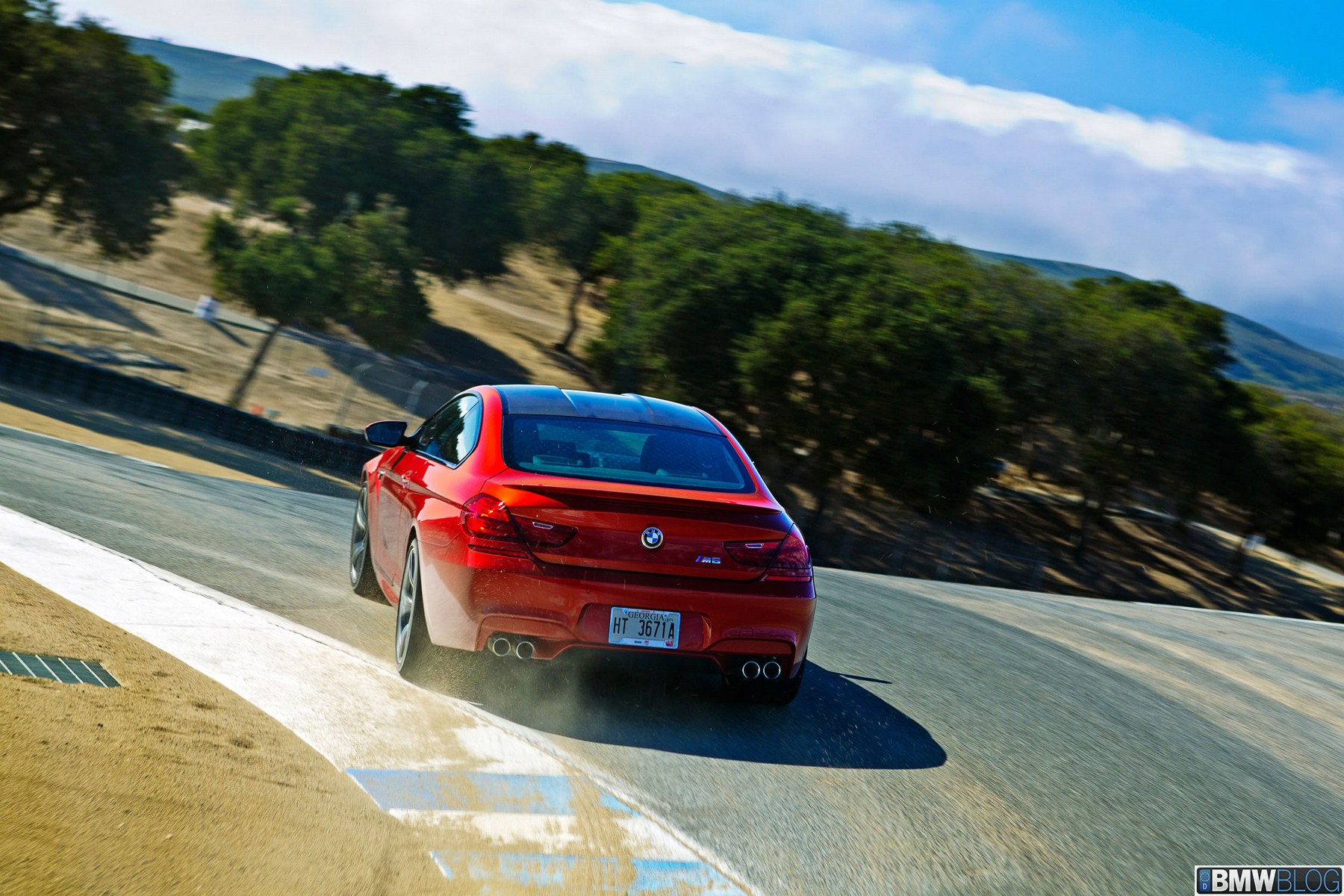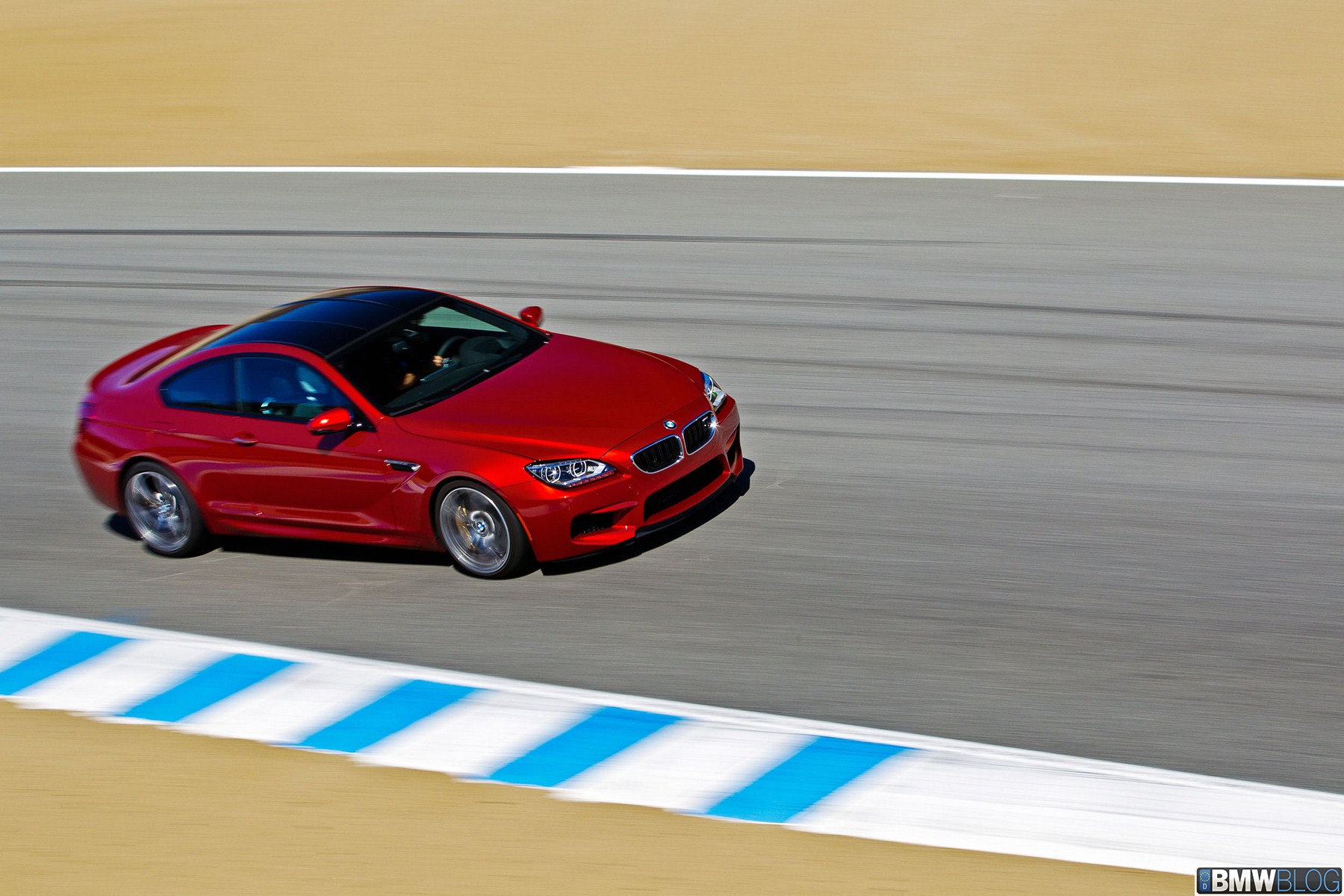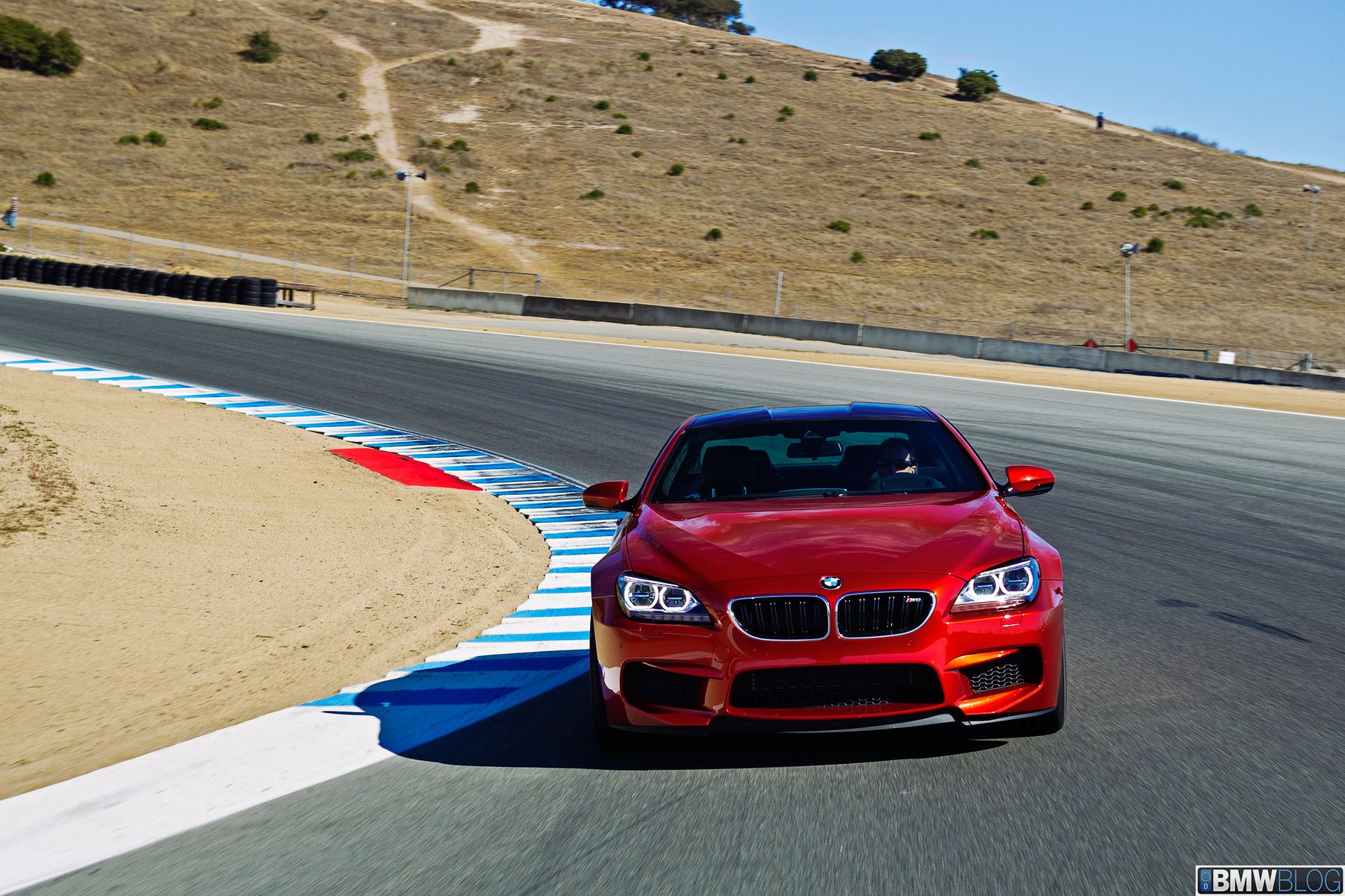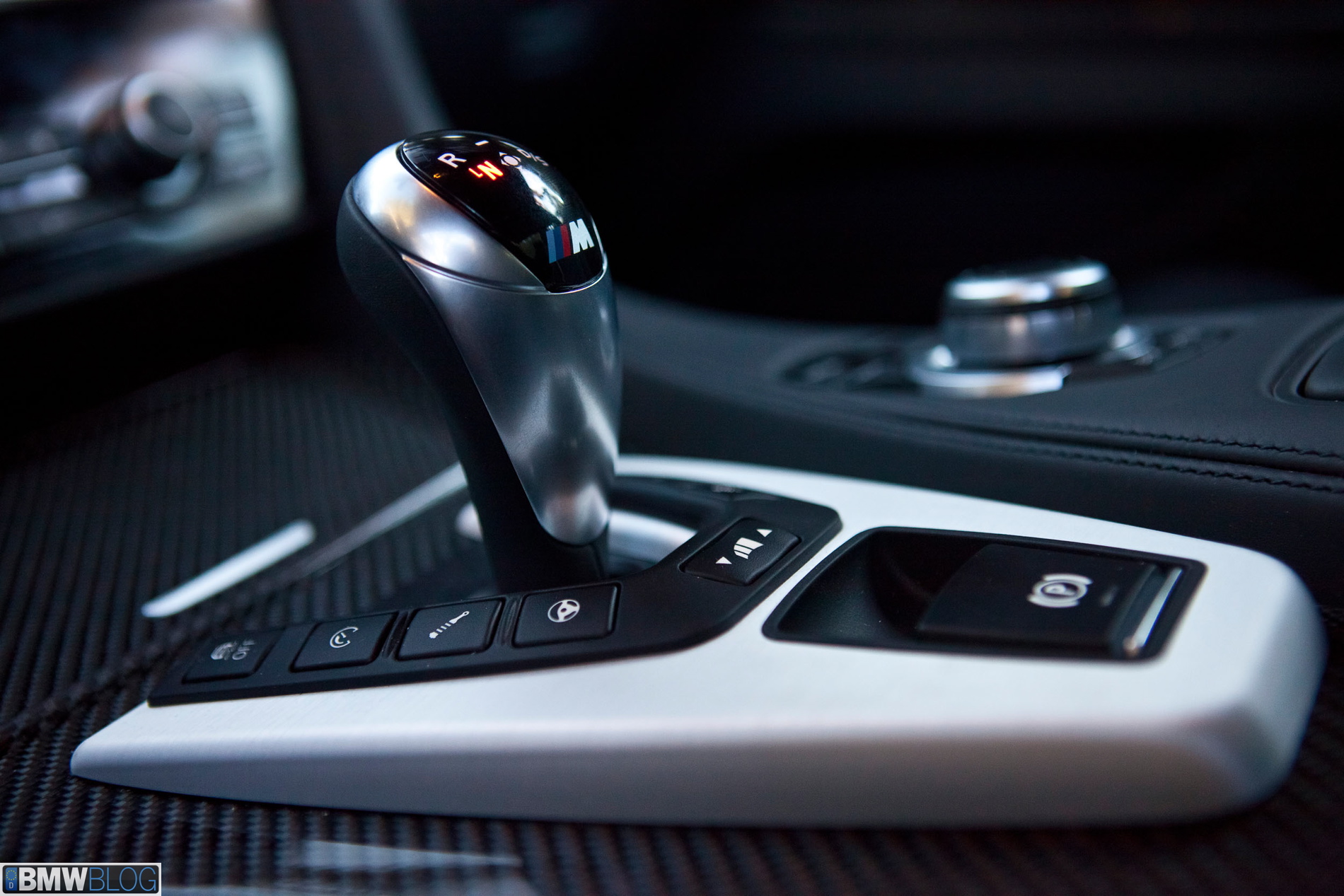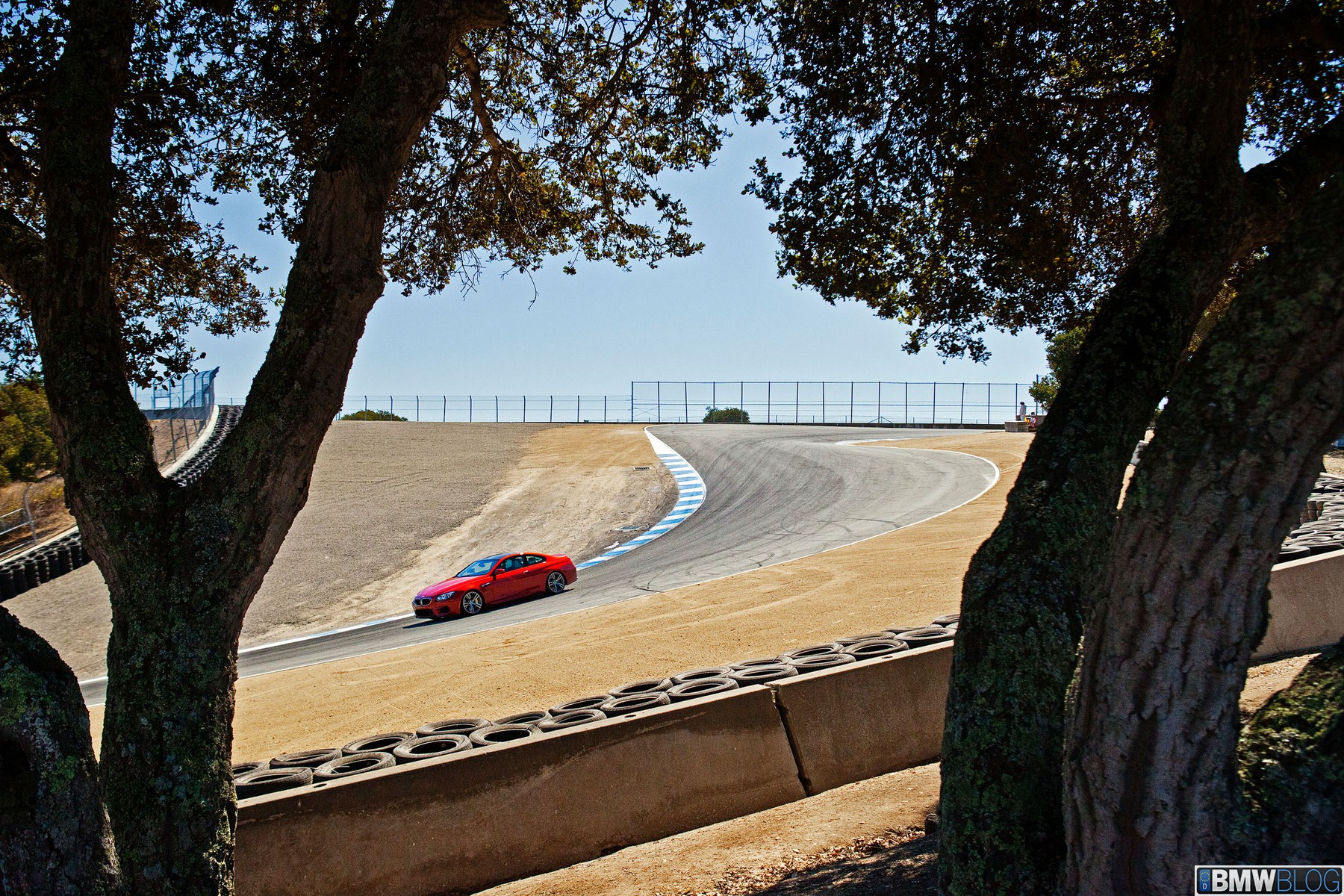In BMW’s family hierarchy, bigger means better. That is to say, a higher number denotes a superior car. Of course, how you define automotive superiority will dictate which car you favor, and we all love cars for different reasons. A rain-meister track-addict will cast his ballot for the all-new F20 1 series as superior – with its uber low curb weight and stiff, communicative chassis. An elderly driver will likely favor the 7, with its graceful moves and comfortable, accommodating interior. A young family will pick the X3 for its good value and spaciousness. You get the idea.
So who will pick the M6? I’m not quite sure, but I think I have a rough idea.
BMW has crowned the M6 as its foremost M car, the pinnacle of the M brand. Of course, the M folks will still tell you that the M3 remains the benchmark for handling – but depending on the racetrack, it may not remain the benchmark for outright performance and quickest lap times.
If you add 374 lbs to the M3, then add 146 hp and 205 ft-lbs of torque, stretch the car in length and width, you arrive at the M6. True, nearly 400 lbs is an awful lot of heft to add to a sports car, but consider that the venerable Nissan GTR weighs a hefty 3,836 lbs (132 lbs heavier than the M3), and the point can be made that through clever engineering, weight can be compensated for, to some extent. Few cars can defeat the GTR on track despite its heavy curb weight, and the M6 tips the scales with “only” 242 lbs more heft than its Japanese rival. The point I’m attempting (failing?) to make is that weight is a critical factor, but with advanced engineering it can be compensated for, to a degree. The M6 is a car that showcases the triumphs of advanced engineering over sheer curb weight.
What’s the time? Helmet time.
Not even M.C. Hammer could stand out from the crowd as loudly as the sparkling orange M6 on hand at Laguna Seca raceway. BMW brought an array of cars for us to sample on the demanding road course of sunny California.
I started my day in a manual version of BMW’s M5 (more on that in a later article), and this very much set the basis for my consideration of the M6, with which it shares its chassis, engine, drivetrain and trick limited slip differential (LSD). My thoughts (and heart) are taken back to the narrow streets of Seville, Spain, where I had my first encounter with the M5. I recall the incredible speed this four-door sedan pulled on the Ascari race circuit and I remember arriving at the epiphany that this is indeed the quickest if not the most romantic M5 ever built.
The bar has been set high for an M car slotting a number above the M5. If BMW welded the rear doors of an M5 shut and badged it an M6, I don’t think I would have complained – the M5 is that competent an all-round sports car.
Of course the Germans are never lazy. There was to be no welding of any doors – rather a complete re-think of the M6, how it should handle, how it should perform. The M6 is based upon the new 6 series coupe – a car that shrinks around you as you drive in a way few large cars can. The basis for the M6 was already sporty and fun to drive, but the M6 has taken things to a whole new level. M engineers have even heavily modified the chassis of the 6 series to suit the racy desires of the M6.
The magic happens with the removal – not the addition of parts. Gone are the rear subframe bushings isolating the rear sub frame from the chassis – instead, the rear sub frame is directly bolted to the frame – adding race car rigidity and spine tingling communication through the driver’s seat. This chassis technology is usually reserved for race cars – no joke. I believe this speaks volumes to the M engineer’s intentions for the M6.
A carbon fiber roof was added, and this helps to lower the overall weight as well as the all-important center of gravity. Also: it looks cool. Aluminum doors, thermo-plastic front fenders and front fascia, an aluminum hood, and a fiber-glass trunk lid were all added in the name of weight reduction. That it still weighs over 4,000 lbs is mystifying given the substitution of these lightweight materials – but rest assured that weight was added where it counts – in the strength and integrity of the car, as well as in safety and luxury measures. The final curb weight rests at 1,850 kg (4,078 lbs).
The Gods look enviously down upon the engine of the M6. Even Zeus feels a little less powerful when gazing upon this M car’s muscular hood and front wings. They house BMW M’s 4.4 liter twin-turbo V8, which produces a thunderous 560 hp and a mountain-moving 500 lb-ft of torque at the ready. We sampled this engine at length in the M5, and not surprisingly, when put to the test in a chassis weighing 309 lbs less, it tends to pull the horizon toward you a little quicker.
I didn’t have room in my luggage to pack my trusty carbon fiber helmet and was a bit too lazy to bring it along like a sugar-bag baby, so I ended up strapping one of those lame open face helmets to my head. The reason I bring this up is not for fashion sake, but rather physics. This loaner helmet was probably twice as heavy as my lid, and as a result my neck was amply surprised by the ripping acceleration of this car. I kid you not, as passenger to a certain lunatic behind the wheel (Bill Auberlen, and I use that term affectionately toward his driving), my neck was strained by the acceleration, lap after lap, to the point that I eventually resolved to let my helmet rest against the headrest during the uphill trip from turn 9 to turn 1. What a blast. The engine is every bit as magical as I remembered it to be in the M5 – except this time the chains have been loosened a few notches; the horse stripped of 300 lbs from the saddle. It runs freely.
In my road review of the M6 I drew a comparison to the Aston Martin V12 Vantage – a car I recently had the pleasure of driving – and allow me, if you will, to draw one more comparison. You would think that nothing could possibly be sexier or more exhilarating than a naturally aspirated V12 at full song. I give you this: the car is brilliant once underway, it truly is a hoot to drive, and off-throttle, it cracks and rumbles deeply, sounding of far-off thunder (the first time I heard it, I literally looked out my open side window and thought, “that’s strange, there are no rain clouds out…”). But I regret my fun and exhilaration was limited in the Aston by one thing: the rev limiter. It kept sneaking up to me, poking me in the head, “Hey new money: it’s the lever to your right and the pedal to your left!” It was rather annoying. And just when the V12 was hitting full song, opening its powerful lungs and voice, the fun ended. Literally every shift I felt as though I was short shifting, getting ripped off – the revs about halfway to redline.
In the Aston’s defense, I ride bikes that rev over 14,000 rpm and I revel in the thrill of the current M3’s 8,400 rpm redline, so it’s understandable that a 6,500 redline and I might not get along like besties. But when you’re spending that kind of money on a raging sports car, you want it to feel a bit wild from behind the wheel. Trust me, you do. You don’t want that clinical feeling of prepared, bottled excitement: every car that feels this way goes down as a failure for feeling soulless. And this is where the M6 comparison comes in. Revving to 7,250 rpm, it manages to keep your smile growing 750 rpm further. It may not sound like much, but in a car that pulls relentlessly, without letup straight to redline, these extra revs make a difference. There were a few sections at Laguna Seca where I didn’t need to shift because I could wring-out every last rpm from the engine, and stay in the powerband.
This topic of redline largely comes down to personal preference and is subjective, so take it for what you will, but in my experience, the M6 is more exciting than the V12 Vantage – a car that had made the tippy top of my bucket list. I’m not discrediting the excitement of driving the Aston (nor am I removing it from my bucket list) – I’m emphasizing just how exciting it is to unleash the M6. It hits you in the back with 560 hp and 500 ft-lbs, and doesn’t let up until you grab another gear – then it all starts over again, plastering you to the seatback, your helmet to the headrest. And we haven’t even taken a corner yet.
BMW has come a very long way with their semi-automatic transmissions. Their old single clutch unit pioneered in the E46 M3; it was a failure by any driver’s standards. BMW will tell you it was good for the times but it simply wasn’t – I can manually shift well nigh as quick and far more smoothly.
A dual clutch transmission was next released, and it showed a significant improvement beyond the single clutch unit – but it still missed the mark: not quick enough, lacking immediacy.
Finally, in the new M6, I have experienced a DCT worth driving. Its shifts are quick and positive – no hesitation. It finally feels as if the paddles are directly connected to the drive wheels, and it’s a great feeling, particularly on the racetrack when you’re fighting for lap times. Would I option my personal M6 with a DCT? Probably not, for once on the street it feels and performs like an automatic, eliminating you from that aspect of the driving experience. There is still something awfully special and rewarding – romantic even – about rowing your own gears, heel-and-toeing through your down shifts. But if you’re gravitating toward the DCT for any reason, know that it’s a great transmission, brilliantly executed and well matched to the M6. Only Porsche’s PDK and Nissan’s DCT could give this transmission a few lessons – and we’re talking best of the best here, that’s no insult.
Rear end grip is astonishing thanks to M’s electronically controlled limited slip differential (LSD). The ‘e-diff’ collects data from an array of sensors around the car, factors in engine rpm, gear selection and other data to determine how tightly it should clasp its wet clutch pack. The diff can close anywhere between 0 to 100 percent, meaning excellent roadway efficiency with wicked racetrack grip at the ready. The LSD is easily one of my favorite features on this sports car; it makes a tremendous contribution to this car’s performance. In some way, it is the unsung hero of the M6 (and M5, for that matter).
Which brings us to the sung hero of the M6: the brakes. I’m confident as I write this that I will not stand alone as the only one raving about the carbon compound ceramic brakes on option on the M6. Sure, it’s a pricy box to check, but good golly do they deliver the goods.
Measuring 16.1’ (410 mm) at the font axle and 15.6’ (396 mm) at the rear, they are bitten down upon by 6-piston front calipers and single-piston floating calipers at the rear. Weighing 19.4 kg (42.8 lb) less than the standard steel rotors, they also offer a substantial performance advantage by virtue of their all-important reduction of unsprung mass – thus mating the tires more eagerly to the road surface despite bumps and undulations.
Thanks to an engine that runs on Zeus’ lightening, a brilliant LSD, and Michelin tires that grip like glue, the M6 completely hides its weight under acceleration. Now, thanks to an incredible brake package, it also hides its weight under braking.
Brakes have always been the weak spot among heavier-set sports cars. Since much of your lap time will be made up in the braking zones, and most passes will also be made under braking, it is imperative that you can rely upon your brake pedal as your closest accomplice behind the wheel. The compound brakes on the M6 deliver this level of performance, allowing you to brake much later and harder, lap after lap. They transform the M6 from feeling like a bloated sports car to feeling like a sports car. The transformation is incredible. After many consecutive fast laps, the brakes never faded, never waned in their performance or bite.
If you are buying an M6 and wondering, “should I pay extra for the compound brakes?” I have a simple question to ask of you: will you be doing track days in your M6? If the answer is affirmative, then check the box. A few thousand extra dollars is a stretch? Sell something, anything. Put your dog on cheaper kibbles. Tap into your kid’s college fund. Sell your wife’s necklace. Do what it takes. I’m telling you: these brakes are otherworldly, and give the M6 a sharp performance edge typically unseen on such a heavy sports car. If the answer is a confident ‘no’, then leave your wife to enjoy her necklace, your child to a higher education, your dog to enjoy its food. You don’t need them and will probably never know the difference, you might as well throw the money out the window – it will probably feel more exciting than the addition of these compound brakes on the street.
This leaves only apex speeds prisoner to the hefty weight, and thanks to a well sorted suspension, balanced chassis, and those sticky Michelins, the M6 even hides its weight quite well through the corners – though not nearly as well as it does on the straights.
Let’s run through a few corners of Laguna Seca to paint a picture of the M6’s handling qualities. Early-apexing and getting a good run off of the last corner before the back straight, the M6 powers uphill with unrelenting acceleration. Halfway up the back-straight, the track drops back downhill, unsettling the chassis. The car’s 4,078 lbs are felt here, as the chassis is slow to settle back into the asphalt.
Now under very heavy braking, those magical rotors burn off speed with vengeance, the M6 feeling planted and stable – no nervous rear-end twitches or rotation. It’s time to turn in to turn 1, and with the front end planted to the track, turn in is immediate and quick – the car shows no signs of understeer. Turn 1 is a double apex, and by the time you are working to bring the nose around the second apex setting up for turn 3, mild understeer is noted, and cured by transferring a little more weight onto the nose off-throttle. Or, if you’re not too serious about lap times, it’s cured by a stab of throttle, getting the chassis to rotate into the corner while putting on a good show.
Fast-forward to the corkscrew, and again the M6 displays great poise, turning in cleanly after a heavy braking zone. Re-weighting back into the track surface, the M6 now struggles to find grip as you go full throttle in 3rd gear exiting the cork-screw – the tail wiggling and the rear axles gripping the track surface. Next is a wide left hand sweeper, this corner has the right-side suspension loaded up, the car in a slight four wheel drift if taken correctly. The M6 has so much grip on offer that it tends to grip and shuffle, grip and shuffle over to the right instead of one continuous slide. Once again, special mention must be given to the Michelins – they really are excellent and work well with this package. The final turn is tight and presents a great place to break the tail loose should you choose to drift through. Like its four-door brother, the M6 makes for one spectacular drift car, all ingredients at the ready.
Finding a rhythm, the M6 felt continuously smaller and smaller around the track. As the laps wore on, I found myself more and more engaged by the driving experience – typically the opposite occurs in any car less than epic. And so, I would label the M6 an epic driving experience, should you have the good fortune to sample it. If you’re on the fence, debating its purchase: get off the fence and go write the check. This M car fittingly sits atop the heap at Garching. Yes, it’s too heavy, and we lament that. But so is the M3, and the M5, and the 1M.
We long for a lightweight M lineup, and we see it on the horizon, but in the interim, the M6 embodies the spiritual heritage of the cars that bore its badge years ago. It is a ‘baun stormer. It is a comfortable daily driver. And it is a hulk of a sports car. If Zeus had wheels, this is what he’d drive.



